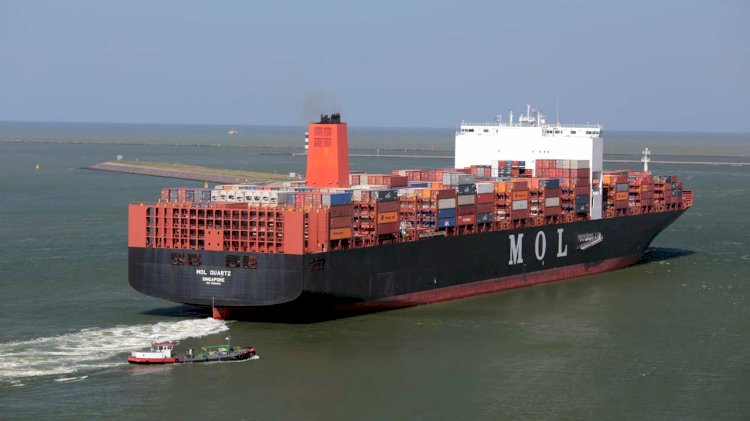New research and development on the energy-saving rudder with bulb fins
Joint development of energy-saving rudder - Recovering the rotation loss of the propeller, Reducing GHG

Mitsui O.S.K. Lines, Ltd. today announced that a group company MOL Techno-Trade Co., Ltd., MOL, Japan Hamworthy Co., Ltd. and Akishima Laboratories Inc. are conducting research and development on the propeller-mounted energy-saving device called PBCF and the energy-saving rudder with bulb fins. The researchers confirmed the energy saving effect of more than 5% with only the energy-saving rudder with bulb fins.
In the development of energy-saving rudder with bulb fins (hereinafter the "developed rudder"), the researchers have enhanced the energy-saving performance and improved horsepower by taking advantage of the steering effect of the rudder of JHC, a specialized manufacturer of high lift rudder such as schilling rudder. The features of the developed rudder are as follows.
1) In order to recover the swirling flow of the propeller, the reaction shape is designed as a high thrust blade section and the rudder horn is also twisted and integrated so as to increase thrust due to the negative pressure on the rudder.
2) By reducing the size of the end plate under the rudder, the resistance is reduced and the propeller swirl flow is also blocked.
3) The large central bulb has a flat front surface to reduce the propeller inflow speed and improve propeller efficiency.
The researchers used JBC (Japan Bulk Carrier) hull, which is open to the public as a general large-sized hull and widely used in various research and development. Generally, it is difficult to improve the horsepower by 4% or more with a normal reaction rudder. However, with the developed rudder, CFD (Computational Fluid Dynamics) showed 5.7% improvement in horsepower and a self-propulsion test in a large towing tank confirmed 5.2% improvement.
The developed rudder has been applied to the slender ship types as well, and an energy-saving effect of 4.4% has been confirmed by CFD. In the future, we plan to conduct a large towing tank test after performing optimization work.
The researchers will continue to improve the efficiency by aiming for a synergistic effect with the torque reduction effect of PBCF for the future installation on actual ships. The developed rudder has been patented.
The pressure change (red to blue) on the rudder surface is caused by the rotation of the propeller. In other words, it flows in from the port side at the upper rudder and from the starboard side at the lower rudder. The researchers aim to develop a rudder that effectively recovers the energy loss of the swirling flow induced by a propeller.



























